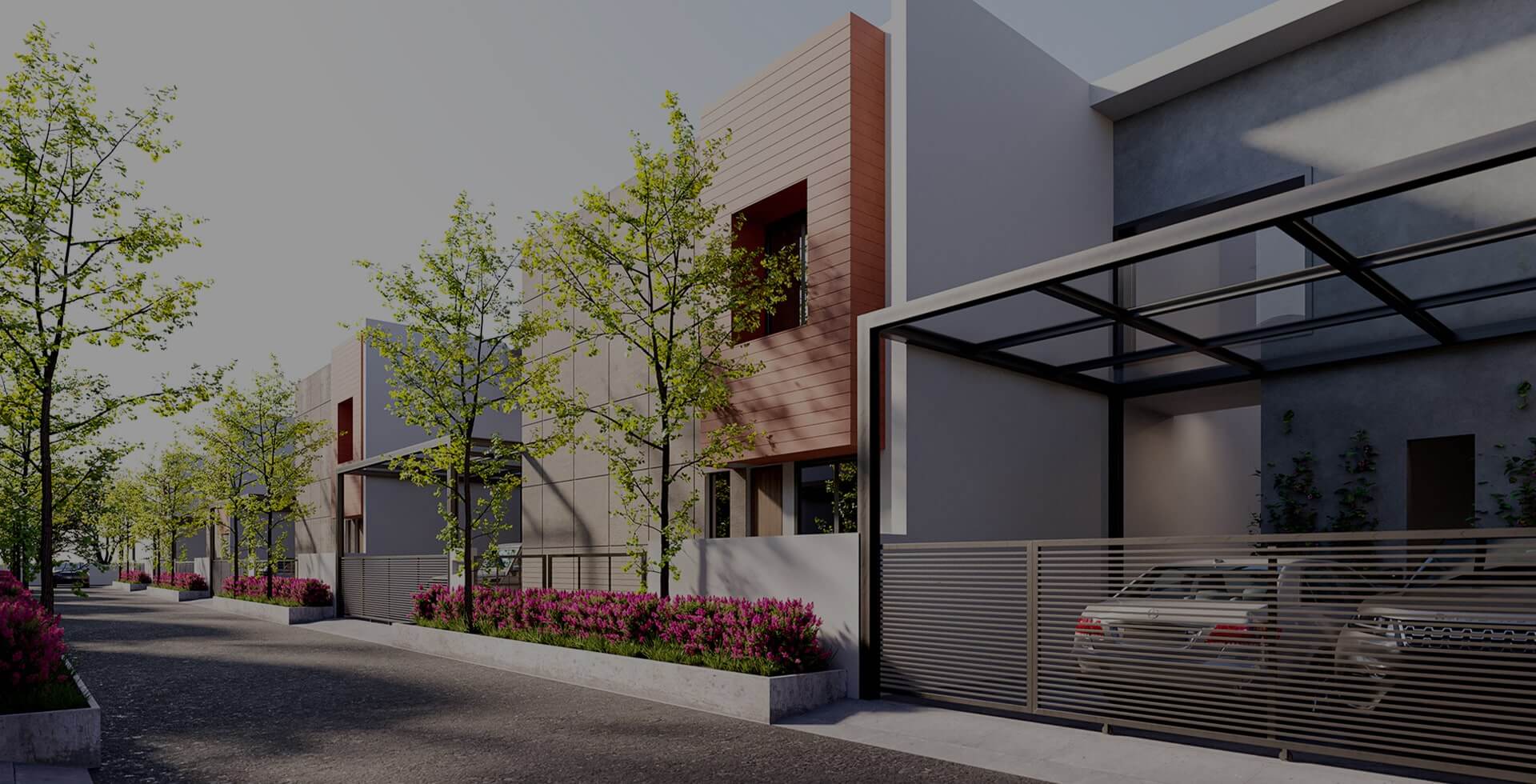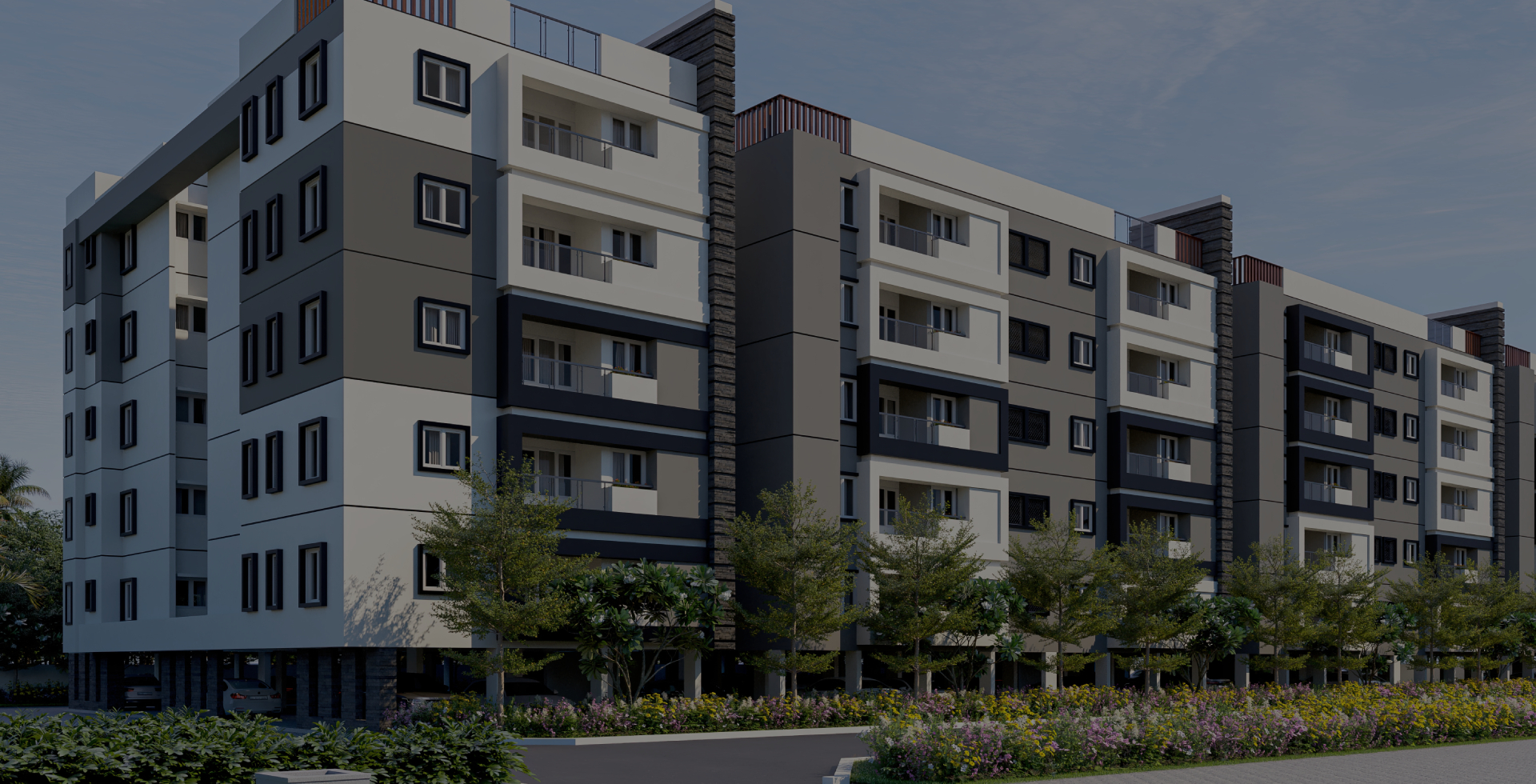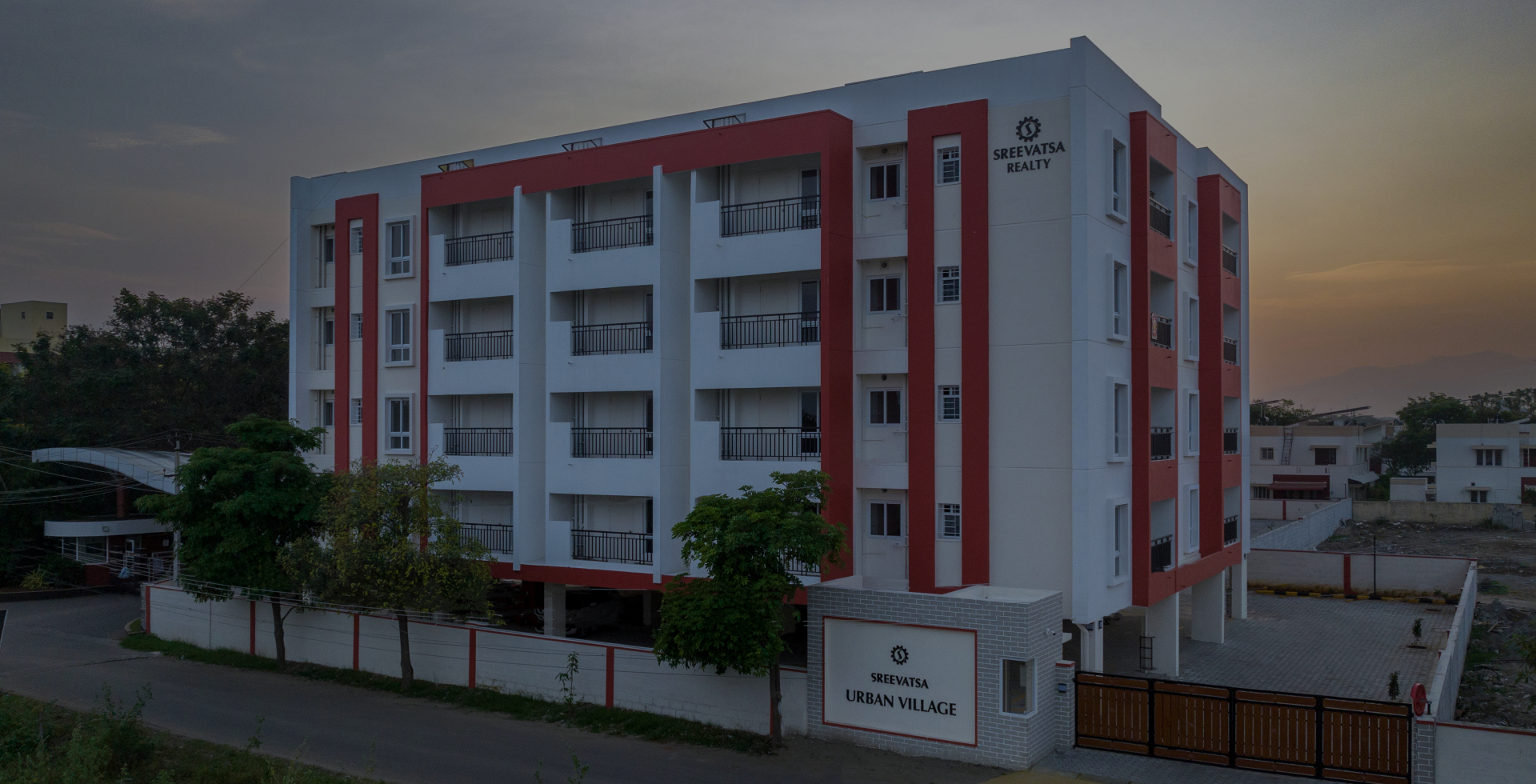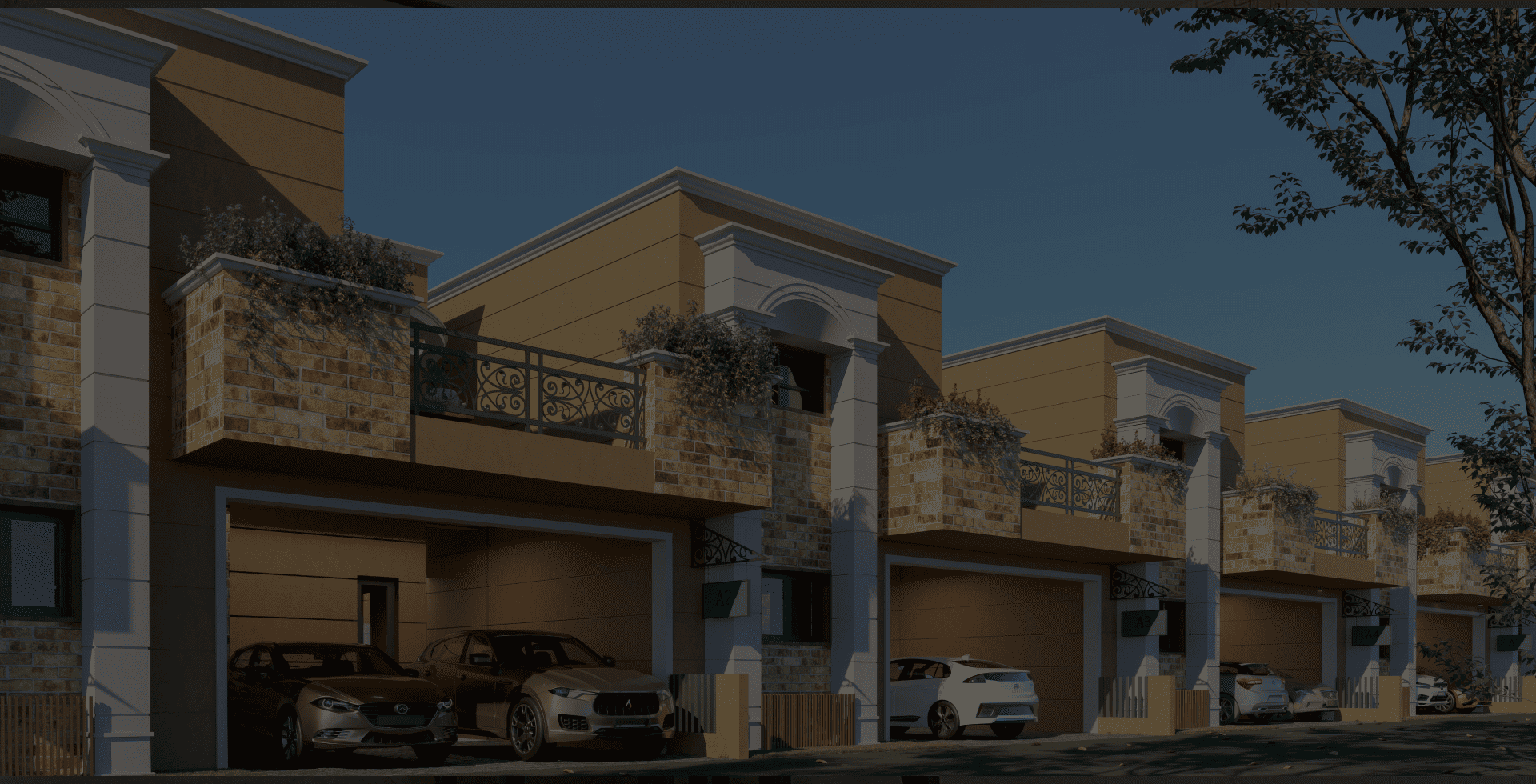Category: Blogs
For Blogs
Is Your Money Really Safe In Fixed Maturity Plans?
IS YOUR MONEY REALLY SAFE IN FIXED MATURITY PLANS?
Mutual fund houses have been aggressively pushing these plans to layman investors promising safety of capital and predictable returns. What can go wrong with these supposedly AA or AAA rated entities?
As it turns out, many!
The past week, Essel Group of companies (Zee) defaulted on the repayment of principal on its debt that had been subscribed by many FMPs including Kotak MF, HDFC MF, Aditya Birla and ICICI Prudential. The FMPs were in turn palmed off to layman investors whose capital is now at risk. They will either not be repaid or repaid with a delay, which will significantly impact IRRs on the investment.
As per reports, close to Rs. 1,400 crores of such instruments are in default risk. As an investor how does one avoid such a risk?Invest only in debt issued by the Government of India or at worst AAA rated blue chip companies, which form part of the index like Nifty50 or Sensex 30. The difference in yield between these securities and FMPs are in the tune of 150-200 bps, which is not commensurate with the risks involved. Avoid getting swayed by “sales speak” of the fund houses who will use all manner of past performance to get you to invest in them.
Invest in Fixed Deposits. While they are often seen as “boring”, fixed deposits are relatively secure investments especially when done with Tier I banks. Avoid cooperatives and Tier II banks.
Invest in hard assets like real estate where capital protection is afforded by the real estate underneath. A property will not go bankrupt like a company. There will always be a buyer for it. Yes, the value may fluctuate and sale may take time, but capital is not entirely at risk.
Author: Kunal Moktan – Property Share – Apr 12 2019How Nicely Done Lighting Affects Your Mood?
HOW NICELY DONE LIGHTING AFFECTS YOUR MOOD?
We all are fully aware that poor lighting can damage our eyesight especially when we are reading or watching, but apart from that lighting can affect us multiple ways.
Effects of Lighting on your Mood
We all are fully aware that poor lighting can damage our eyesight especially when we are reading or watching, but apart from that lighting can affect us multiple ways such as- Insufficient lighting can cause depression
- Deficiency of Vitamin D
- Impacts appetite
- Effects on circadian rhythms
All these lighting effects eventually disturb your emotional health and ruin your mood. However, by adjusting the correct level of lighting in your home or office, you can easily avoid all these mood-related problems. But, for that, you have to understand the how and what kind of lighting affects your mood.
Here are three different lighting levels mentioned that can affect your mood:
1. Bright Light
In bright light, you may experience both positive and negative emotions. A study was conducted by researchers in 2014 to assess the level of emotional intensity under the influence of bright light and it is concluded that reactions are usually more intense under bright lights.2. Blue Light
In a recent study, it is found that people under the influence of high energy blue light are highly productive. It is found that blue lighting affects your mood positively and brings extra energy in your life.However, blue light is your friend during the day time only as the exposure to this light during the night can make harder for you to fall asleep. The exposure to blue light coming from smartphones or laptops screen can delay the sleep-inducing hormone melatonin in your body, which may eventually increase your blood pressure and affect your mood negatively.
3. Natural Light
The benefits of natural light are many. Exposure to natural light for a few minutes daily can have a very positive impact on your day. According to a study, it is found that people who have airy and well-ventilated windows in their homes or offices – exercise more, sleep better and have overall better health. It is also found that natural light keeps your circadian rhythms under control which makes you feel energetic all day long.This light is your best mood booster as it helps in reducing the symptoms of depression. Deficiency of Vitamin D is a major cause of depression and it can be completely treated by exposing yourself to sunlight for regularly. Some doctors have found that the combination of light therapy and antidepressants makes the ideal treatment for depression.
Intense Lighting Affect on Your Mood
Lighting undoubtedly has an intense impact on your mind – from your eating habits to your hormonal cycle everything is affected by the lighting in some way. It is highly advised to keep your level of lighting moderate in your life which leads to a healthy and happy mindset. You should always remember that natural lighting affects your mood positively and that’s why it is recommended to spend a few minutes daily under natural light and close to nature.Author: ET Realty
What Makes A Real Estate Investment Yield Returns!
WHAT MAKES A REAL ESTATE INVESTMENT YIELD RETURNS!
While buying a property, investors have high aspirations in terms of returns but the same turns into anxiety when returns don’t come. Be it residential or commercial, one must consider a long-term horizon for good returns.
NEW DELHI: Investors have made the most out of Indian markets thanks to economic growth and rising demand for real estate assets in the country. Over the years, real estate market dynamics have changed due to policy reforms. RERA has not only consolidated the real estate sector but has also brought transparency. It has infused confidence in investors to enter the market.
While buying a property, investors have high aspirations in terms of returns but the same turns into anxiety when returns don’t come. Be it residential or commercial, one must consider a long-term horizon for good returns.
Real estate is certainly a wealth creation tool but to get the expected returns depends on many factors such as property, location, market trends etc. Indian buyers are more informed today than they were a few years back. However, they still need more information to fulfill their investment aspirations.
Investment Prospects
Real estate has been the engine of growth and employment in most emerging markets. India is an emerging market and the overall real estate trends appear favourable today. It is important to know about change in policies and follow market trends so you know what may impact your investment in the long term. One must choose the right builder, good quality property, good project, location and adapt changes as per the circumstances. Buyers need to ask relevant questions.
One significant change has been highlighted in an Anarock report – Between 2015 and 2018, Indian real estate witnessed a total inflow of USD 14 Bn worth Private Equity (PE) investments. While 2015 and 2016 together saw investments of USD 5.4 Bn. Momentum was seen in the last two years when investments grew to USD 8.6 Bn collectively. This growth can be attributed to the various reformatory changes in Indian real estate that helped increase transparency and thereby boosted investor confidence.
The real estate sector keeps opening new avenues for investors and they can earn returns if they read the market well. Currently, rising demand offer high potential for returns in the future.
Shobhit Agarwal, MD and CEO, Anarock Capital says, “FDI policy relaxation coupled with landmark reforms (such as RERA, GST, Insolvency and Bankruptcy Code, adoption of REITs, etc) are altering the sector from being an unorganised one-man driven family business to an organised, structured and corporatised with financial discipline.”
Long-term V/s short-term investment
Historic trends suggest that long-term real estate investments have yielded good returns as compared to short-term schemes where uncertainty is high. Due diligence is a must when you are investing your hard-earned money in a property.RERA and Builder-Buyer Agreement
The Real Estate Regulation (and Development) Act, 2016 (RERA) came into effect on May 1, 2017. If you have invested in a property in the pre-RERA era, it is recommended that you get your Builder-Buyer Agreement RERA compliant as it will protect your investment. You must speak to your developer to stay updated on RERA registration and other changes he makes in the project.“A builder buyer agreement has to be as per RERA. Existing buyers must also ensure that their agreement of sale is as per RERA regulations. It will help them address their issues in case of violations by the developers. Builders also need to inform buyers about RERA registration,” says Kalpana Misra, member, UP RERA.
RERA defines the builder-buyer agreement as ‘agreement for sale’ and section 4 lays down that the builder is responsible for all obligations, responsibilities and functions as per the agreement for sale. If you have invested long back, get your old builder-buyer agreements RERA compliant.
Choosing the right forum
Choose the right authority to file your complaint depending on the hierarchy instead of going to large forums where you may not find solutions for minor disputes with your builder.Firstly, speak to your builder and try to get a solution from him. Accordingly approach the higher authority, depending on the response you get on your complaint. Filing complaints at wrong forums may delay and complicate your case.
Protect Property Reputation
Often it is seen that social media platforms or other channels are used to vent your anger. This way the reputation of your property is at risk. Remember, that the property and rental values generally depend on the reputation of your property. One must use the right forum to address a grievance avoiding tarnishing the reputation of your property which otherwise could give you good returns and rentals in future. A project with a tarnished image is unlikely to draw good returns and rentals.“There are some developers who have not kept the promises they made to buyers so buyers go to various forums including social media, to badmouth such a developer and his project. It not only harms the interest of the developer but also impacts their own future prospects in the form of lower resale and rental value,” explains Deepak Kapoor, Former President, CREDAI Western UP & Director.
There are many factors which work in favour of real estate investments. However, buyers need to be informed, aware and take the right steps to protect their investment and get the most out of the market.
Author: Ravi Kumar Diwaker – ET Realty
Co-Working And Co-Living Spaces Changing The Way You Work And Live!
CO-WORKING AND CO-LIVING SPACES CHANGING THE WAY YOU WORK AND LIVE!
Co-working and co-living spaces ensure these facilities to occupants. Between 2011 to 2016, interstate migration in India touched 9 million annually.
Co-working and co-living are two innovations which are redefining the way people live and work. While choosing a location for living and working, there are many factors such as proximity to work, safety, social infrastructure, cost, security deposits and rentals which play a big role.
Co-working and co-living spaces ensure these facilities to occupants. Between 2011 to 2016, interstate migration in India touched 9 million annually. To meet the housing demand of this mobile population, a cost-effective and flexible lifestyle solution was required. This proves that there is significant opportunity for co-living operators in India.
“Co-living, like car-pooling and co-working, is the result of demand for more evolved rental housing solutions from millennials, students and young working professionals whose choices differ vastly from those of previous generations. Going by recent trends co-living may offer a higher rental yield of as much as 8-11%, as compared to the current average yield of 1-3% in residential properties. It is definitely paving the way for a new asset class in real estate investing. Interestingly, co-living spaces can also bring down the average cost of living for consumers by as much as 10-15% on the back of optimal real estate utilisation and the economies of scale,” says Anuj Puri, Chairman – ANAROCK Property Consultants.
Rising demand for co-working space is changing the dynamics of office space in India. According to Knight Frank data, while co-living segment is set to offer a business opportunity of INR one trillion and 5.7 mn beds by 2023; co-working spaces already have a 12% share in total office leasing. The growth of co-working spaces is likely to push property prices of projects located around them.
People are likely to live near locations with proximity to job hubs and economic activity. Commuting for long hours is something people want to avoid. Therefore, both co-living and co-working spaces are likely to push the demand in locations where these can be encouraged.
Samantak Das, Chief Economist and Head of Research & REIS, JLL India, says “With these two innovative segments (co-living and co-working), Indian office and residential real estate is set to grow bigger and better. However, stakeholders need to address the existing challenges such as data privacy, the conservative approach of property owners and relevant supply observed across co-working and co-living, respectively.”
Knight Frank report reveals some key trends:
- In co-living, in value terms, Delhi NCR will constitute nearly 40% of this potential market opportunity
- Affordability, convenience and community – pull factors for the migrant millennial work force. This will drive growth in the co-living space
- Share of co-working space in office leasing to increase manifold in the near future
- Mumbai records the highest proportion of co-working space to office leasing in 2018
6 Reasons Why Investing In Apartments Is The Best Idea
6 REASONS WHY INVESTING IN APARTMENTS IS THE BEST IDEA
Asset Appreciation
Investing in apartments is the safest appreciation of one’s savings. It is a life-long strength that remains with your family for the future. Invest in a project at the right location. Sit back and watch your asset value increment over time while possessing a safe & secured asset.Dynamic Income
Multiply your income by offering your apartment on rent if it is an investment. Offer your house to people who are studying, working, newly married or have a small family. You will get your rent amount every month, depending on the market value at that point of time. Certainly it is the most refreshing way to get returns through one-time investment.Safety
Expect better safety and security when you buy a flat. Your house must have a protected space; undoubtedly, the guards will look after the whole property in your absence. There must be CCTVs kept throughout the building. It should have a trusted 24×7 security facility. Invest in properties from developers who offer such amenitiesEase of Funding
It is effortless to get the loan for apartments when compared to constructing individual houses since the approvals are obtained by the developer and financials are approved by banks with minimum efforts from the buyer’s end. Apartments provide a more affordable housing option. Also, people applying for home loans must check the RERA compliance as the banks will approve & sanction the loan only to those builders with RERA approval.Amenities and Facilities
When you go for apartments, you get other amenities like children’s play area, basketball courts, gardens, lifts, UPS wiring, and lots more. You will also have a beautiful community, where you can build an enjoyable relationship with your set of ‘Apartment Families’. You need not worry about water, maintenance of the area, etc. since the apartment association will jointly take care of it. Also, it would be a shared maintenance charge.Future Benefits
With time the value of your property will appreciate. You can claim the pride of ownership which you enjoy. The identity of the community is defined by the quality of life established in the apartment. This would bring higher dividends in appreciation of value together with all the above advantages.
Sreevatsa Real Estate Projects has delivered over 25 projects that have defined community living while providing best quality and ergonomic design for each apartment.
Sreevatsa Real Estate has delivered over 25 projects that have defined community living while providing best quality and ergonomic design for each apartment. All documents are ready with the necessary approvals and RERA certified. Both projects are cleared by major banks enabling ease of transaction.
What Is The 10:90 Payment Plan While Purchasing A Property?
What is the 10:90 payment plan while purchasing a property?
Simply explained, in the 10:90 plan, the buyer has to contribute 10% of the total cost of the property from their pocket at the time of booking and pay the rest at the time of possession of the property. Traditionally, CLP has been the most commonly offered payment plan by builders. CLP stands for Construction Linked Plan, which requires buyers to make payments after the construction reaches specific milestones. For example, you might have to put in 15% while booking, 20% when construction starts, 60% during various stages of construction and rest during possession. There are no standard milestones and each builder can define their payment milestones.
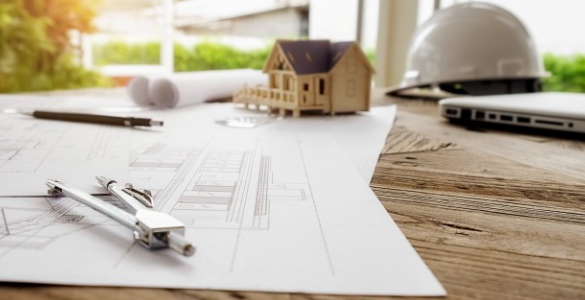
How does 10:90 plan work?
- Book a property by paying 10% of the total price.
- Avail Loan from preferred bank at best possible rate of interest.
- No payments or loan EMI until possession.
What are the benefits of a 10:90 plan?
- The property could be purchased with minimal investment. E.g. if the property costs Rs. 70 lacs, you can book with just Rs. 7 lacs.
- 10:90 plan doesn't involve any interests or home loans after the initial payment until possession. As an example, if you took a home loan at a 6.9% interest rate for an amount of Rs. 70 lacs, you will pay Rs. 5.25 lacs in interest each year. With 10:90, you easily save Rs. 5 -15 lacs based on the cost of your property.

Comparison of 10:90 plan vs CLP
Imagine you intend to purchase a property costing Rs. 60 lacs which will be ready for possession in Dec 2023. Let’s see what it would look like if you went ahead with the traditional payment model.
Scenario with traditional payment plans
Traditional payment plans require you to pay interest EMI per month which can cost you lacs of rupees.
1. Home Loan Interest Rate
- The current home loan interest rate is 6.9%, which means in 2-3 years until possession, you may have to pay up to Rs. 10 lacs in interest.
- That's already 15% of the property cost you are paying as interest.
- You are essentially losing this money and it's a negative investment.
2. Lost opportunity cost due to payments made
- You will pay up to 80% of the amount before possession
- This means you invest up to Rs. 39 lacs and cannot even live in the property or rent it out!
- If you keep these Rs. 39 lacs in a fixed deposit at 7%, you will earn Rs. 3 lacs in interest each year.
- You are not only losing this potential return but also paying the home loan interest rate as mentioned above.
| Scenarios | 10:90 Plan | CLP Plan |
|---|---|---|
| Property Cost | Rs. 60 Lacs | Rs. 60 Lacs |
| Number of years until possession | 3 years | 3 years |
| Upfront payment during booking | Rs. 6 Lacs (10%) | Rs. 9 Lacs (15%) |
| Additional payment until possession | Zero | Rs. 30 Lacs (65%) |
| Loan amount before possession (if opted) | Zero | Rs. 51 Lacs (85% Loan amount) |
| Bank loan interest paid until possession (if opted) | Zero | Rs. 11.4 Lacs |
| Total investment before possession | Rs. 6 Lacs | Rs. 39 Lacs (7.5% for 3 yrs) |
| Effective cost of property on day of possession | Rs. 60 Lacs (Rs. 6L booking + Rs. 54L due) | Rs. 71.4 Lacs (Rs. 39L paid + Rs. 21L due + 11.4L interest) |
3. No rental income until possession
- Rental income is a great way to subsidize your EMI payments.
- With no possession of the property, you have no rent income.
4. Purchasing using 10:90 plan
- You will pay approx Rs. 6 lacs for booking the property and obtain a home loan.
- That's it.
- No EMI, No partial payments until completion for occupancy.
5. Comparison of cost – 10:90 Plan vs traditional CLP
- For our hypothetical property costing Rs .60 Lacs, let's compare how much money it will actually cost you and how much return on investment you will get.
6. Detailed Breakdown of Payment Slabs for 10:90 vs CLP
- Note: Payment slabs for CLP plans vary for each builder, this table shows representative slabs..
| Scenarios | 10:90 Plan | CLP Plan |
|---|---|---|
| Property Cost | Rs. 60 Lacs | Rs. 60 Lacs |
| Number of years until possession | 3 years | 3 years |
| Upfront payment during booking | Rs. 6 Lacs (10%) | Rs. 9 Lacs (15%) |
| 1st Payment Slab (~ 6 months) | Zero | Rs. 9 Lacs (15%) |
| 2nd Payment Slab (~ 12 months) | Zero | Rs. 12 Lacs (20%) |
| 3rd Payment Slab (~ 18 months) | Zero | Rs. 18 Lacs (30%) |
| Final Payment (at possession) | Balance amount | Rs. 12 Lacs (20%) |
Which plan to choose?
Every property is different, and you can decide for yourself based on the information above.
Invest in a better future by choosing Sreevatsa!
Mortgaged Property For Sale
How to buy a used bank mortgaged property
If you are planning to buy a used resale property from a seller who has already taken a home loan on the property, then it is important for you to perform certain due diligence. Firstly, check whether the existing owner has any pending home loan, electricity and water charges or other dues on the property. You also need to check whether the property is owned by a single owner or is shared. One should also check whether the property is leasehold or freehold. If the property is leasehold, then the seller needs NOC from the government authority. You can either choose to ask the existing buyer to clear the home loan or if you are also planning to take a loan to buy the property, then you can apply for a transfer of the seller’s loan to your name. The bank will take your KYC and check your eligibility and then check the seller’s file and transfer the loan to your name.
Deepak Chowdhury, partner, Induslaw, explains, “The buyer must insist on a copy of all, the title documents of the used property for conducting a title due diligence to identify the risks, if any, on the property. The buyer will also require the title documents if he intends to obtain a loan for financing the acquisition of the property. The buyer should also request the seller to obtain a statement of the loan outstanding (principal and interest (including penalty interest, if any)) due from the bank wherein the home loan is pending, and a confirmation of the property documents mortgaged with the bank.”The buyer has to verify all title documents in relation to the used property:
- Deed of transfer in favour of the seller and the property tax certificate issued by the concerned municipality in the name of the seller. In case the property is a flat/apartment situated in a high-rise building, check if the undivided share of the land over which the building has been transferred in favour of the seller.
- Title documents for the past 30 years, so that the title of the vendor/builder of the property can be established. Also, procure a certificate of encumbrance from the concerned sub-registrar to assess all the previous title transfers and encumbrances on the property.
- Sanction Layout, Building Permit, Occupancy Certificate, Zoning Regulation, Fire NOC (in case of a high-rise building), permission for lifts installed at the building wherein the property is located.
- No objection certificate for transfer of ownership and No-dues certificate from the Cooperative Housing Society/RWA of the building or the builder if he maintains the society.
- Municipal taxes pending against the property. It would be advisable to also check the dues against the property that may be pending towards the electricity and the water departments. Also, obtain receipts to verify the tax paid by the present owner.
- An independent search needs to be conducted on show-cause/demand notices pending against the property or the building wherein the property is located.
- Check if any litigation is pending against the property or the building wherein the property is located in a subject matter of litigation against the builder/developer.
Is it safe to buy a used property mortgaged to a bank?
- Unless the property is subjected to any litigation or exercise of mortgage rights by the bank, it is safe to buy a resale property pending mortgage. However, the buyer needs to insist on the closure of the loan and a no dues certificate from the bank before purchasing the property. In case the buyer intends to take a loan for acquiring the property the buyer must move a proposal to the bank from which it intends to avail a loan and get a legal and technical clearance as well as obtain a sanction letter from the bank before the transaction.
- Nikhil Varma, founding partner, MVAC-Advocates, Solicitors and Consultant, says, "The procedure to purchase a mortgaged property is not complex and in order to purchase such a property, the purchaser may either close the existing loan or get a new loan from the same bank to close the existing loan or get a loan from another bank. The purchaser must ensure that the seller provides them with the no-dues and no-objection certificates both from the bank and builder/RWA. There are instances wherein the agreement for such a transaction is a tripartite agreement making sure that the bank is aware of such a sale and an active party to the same."
- Getting all the relevant documents is very important as then you can get bank approvals easily and also be able to register your property without any issue."Buying a house (be it a flat or an independent house) with an existing bank loan requires patience and time. If you are borrowing from a different bank, then one bank can pay to the other bank and take over the existing loan. However, if the bank is the same, then internal loan transfer takes place, and you become the new owner after registering the property," adds Aditya Chopra, managing partner, Victoriam Legalis - Advocates & Solicitors.
- Make a checklist of the documents you have and then create a list of documents you require from the existing sellers before buying a bank mortgaged property. Pay only the token/booking amount when you have verified the owner, the property and have made sure it is good to buy."
Home Loans: Know The Types Of EMI Options Available
Home Loans: Know The Types Of EMI Options Available
Find out about different types of EMI options available with your preferred bank before finalising your borrowing decision
After a few years, the EMI increases gradually with an assumption that the borrower’s income will increase simultaneously to be able to repay the loan comfortably.Despite the financial setbacks suffered by many due to the pandemic, buying a home remains one of the top financial goals for countless Indians. Many take the help of home loans to finance their purchase after months of research, planning and budgeting.However, at times many do not try to identify the type of home loan that would best meet their loan requirements and repayment capacity. In fact, home loan products may not just differ in terms of interest rate, benchmarking, processing charges, loan type, etc., but also the EMI options. Here are a few prominent home loan EMI options that you should be aware of to make informed decisions as per your repayment capacity.
Home loan EMIs with a moratorium
Many banks allow moratorium options to their home loan borrowers. This facility allows a delay in EMI payments typically up to five years wherein borrowers can pay only the interest until the EMIs begin. In such an option, the EMI amount is stepped up in the subsequent years after it starts. If you are looking for higher loan eligibility and expect an increase in your income in the future to meet the step-up EMI repayment requirement, you may go for this facility. The EMI moratorium facility can help you buy a home with a higher value than what your current finances permit.
EMI on home loans with overdraft option
Several banks in the market allow home loans with overdraft (OD) facilities. Under this option, the EMI obligation is the same as regular home loan products, but the borrowers get the liberty to park surplus funds in the bank account to save on the home loan interest to that extent for such period for which the fund remains in the account. The borrowers, thus, get the flexibility to reuse the extra funds parked in the account that helps them in maintaining a higher level of liquidity as well.
That being said, the extra funds parked in the account is not considered for tax deduction benefits under Section 80C of the I-T Act. Also, the interest rates on home loans with an OD facility are usually a little higher than regular home loan products. This option is useful to certain borrowers (like businesspersons) who often receive large funds for a short period to help them significantly cut down on the loan interest component.
Home loans with increasing EMI option
Some banks allow the facility of home loans with the increasing EMI option. In this type of product, the bank fixes a lower EMI during the initial few years of the loan. After a few years, the EMI increases gradually with an assumption that the borrower’s income will increase simultaneously to be able to repay the loan comfortably.
The increasing EMI home loan suits borrowers whose income is low or slightly inadequate to repay the EMI. The bank works on the assumption that the borrower’s income will increase in the coming years so that he/she will be able to comfortably repay a higher EMI in the future. You may apply for this loan facility if you have just started your career or have low income in the initial few years and expect job security during the entire loan period and a consistent income increase. Also, you could step up your EMIs on a regular home loan as well.
Options for under-construction properties
You can also choose between a pre-EMI and a full EMI option when buying an under-construction property. In a pre-EMI plan, you need to pay only the interest on the disbursed amount till you get possession of the property or at the end of the moratorium period (usually around 2-3 years), whichever earlier. On the other hand, in a full EMI option, you have to start paying the EMI immediately regardless of the bank disbursing the loan partially or completely. Under the full EMI option, the EMI is calculated on the entire loan amount and not on the amount disbursed by the bank until that time.
Apart from the above-mentioned EMI options, banks may also offer additional variations in home loan products; as such, you’ll be well-advised to inquire about different types of EMI options available with your preferred bank before finalising your lending decision.
Reference:
World Water Day
World Water Day: Global water crisis looming, high time we introspect and change our attitude
In recognition of the importance of fresh water and sustainable management of this valuable resource, World Water Day takes place each year on March 22 to raise public awareness.
Life cannot exist without water, which is one of the earth’s essential elements. A living being like a human, animal or plant is impossible without water. Therefore, it is rightly said that “Water is life”. Human life, however, is facing some questionable situations such as acute water shortages due to over consumption, industrialization, and overuse of natural resources.In recognition of the importance of fresh water and sustainable management of this valuable resource, World Water Day takes place each year on March 22 to raise public awareness. ‘Groundwater: Making The Invisible Visible’ is the theme for this year’s World Water Day.
People across the world need to change their attitude towards water. “In the time of increasing population growth and climate change, the World Water Day has become even more relevant. It has been over 5 years since the launch of the Sustainable Development Goals. SDG 6 highlights ensuring availability and sustainable management of water for all but how much has been achieved in this direction? With looming water crisis worldwide, it is high time that we introspect and change our attitude towards water. Even though this is necessary, there is great potential in focusing on the ‘demand side’ – working with rural communities to be more water-efficient and partnering with like-minded partners to provide water to the people.” said Pearl Tiwari, Director & CEO, Ambuja Cement Foundation.
Also, lots of water get wasted in activities like washing of clothes, utensils, vehicles etc. Nitin Sharma, Founder of GoWaterLess said that “Trillions of water is wasted on vehicle wash. Urbanites seem to demand RO Water even for bathing. People don’t get clean water for their daily usages. Especially during Summer, water crisis is a big issue in many parts of India. World Water Day spreads the message of utilizing it wisely. Understanding the importance of water to the core after experiencing an acute water crisis at my family business of automobiles – I decided to innovate a substitute and something which has a finishing touch too. Modern world is formed in a way that Water is easily accessible and people don’t have to travel far to have it and hence no one values it. Even now in many parts of country people have to travel many kilometers for their daily necessities. We can change the system by re-building our needs. If cities will negotiate with smart usage in water management – villages will not face droughts.”
According to one estimate, a mere 5-10% improvement in water efficiency would be enough to meet the drinking water needs in the country. But much of the strategy to address the impending water crisis has focused on only the ‘supply side’ – To keep pace with India’s population growth, large infrastructure projects will be necessary to harvest or tap into more and more.

